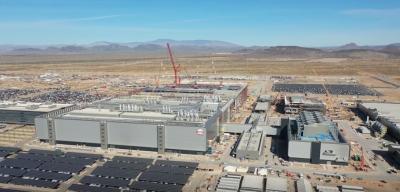Thirty measures as part of a construction "industry transformation framework" are detailed in a new report compiled by the World Economic Forum in collaboration with The Boston Consulting Group (BCG).
Thirty measures as part of a construction "industry transformation framework" are detailed in a new report compiled by the World Economic Forum in collaboration with The Boston Consulting Group (BCG). Shaping the Future of Construction: A Breakthrough in Mindset and Technology describes and promotes the effort needed from all stakeholders for the industry to fully realize its potential for change.
The construction industry has been slower than most to adopt technological innovations, and wary of modernizing strategies and processes. In the U.S., labor productivity in construction has actually fallen during the last 40 years. These facts are particularly surprising because of the industry's central role in everyone's daily life and its powerful impact on other industries, the environment, and the economy as a whole. The construction sector now accounts for 6 percent of global GDP, and about 30 percent of greenhouse gas emissions are attributable to buildings. Given the industry's size and weight, even small improvements in performance would generate huge benefits for the world.
Shaping the Future of Construction: A Breakthrough in Mindset and Technology covers, among other things, the use of innovative technologies, enhancements in operations and processes, adjustments to business and HR strategies, industry cooperation, and, crucially, optimization of public policy. Citing numerous best practices and case studies, it applies not only to construction companies but also to design companies, suppliers of technology and building materials or equipment, and others on the value chain, as well as to the industry as a whole and governments. "For many in the industry, the approach described in the report is a new and possibly radical one, but it is the path to a more innovative, productive and socially responsible future," said John M. Beck, executive chairman of Aecon, who introduced the report.
Already Within Reach
Change is already under way, headed by the construction firms themselves with the support of innovative processes and products. Emerging digital technologies will boost productivity, enhance the quality of buildings, and improve on-site safety and environmental compatibility: 3D models for guidance, robots for the dangerous work, and drones and embedded sensors to check on progress, for instance. "Individual companies have serious transformative opportunities now, by exploiting new technologies and materials," said Santiago Castagnino, a partner and construction expert at BCG and co-author of the report. "If you also optimize the planning and the processes, you could easily end up cutting costs by 15 percent and reducing the completion time by as much as 30 percent."
Such scenarios are not futuristic. Leading-edge technologies already affect all subsectors and all stages of a building asset's life cycle -- from planning and design through operations and maintenance. But their adoption is still sparse and uneven. Only when the various advances have been adopted pervasively will the industry really be able to boast of a transformation -- that is the clear message of the report. In the words of Pedro Rodrigues de Almeida, Head of Basic Industries and a member of the Executive Committee at the World Economic Forum, "The report provides a preview of the upcoming changes in the industry, and a way of accelerating their realization. It offers a tool kit for success, but it also serves as a necessary rallying call."
Collaboration and Beyond
The industry is extremely fragmented. To unlock its full potential, companies along the value chain will need to collaborate far more than they do now, and industry organizations will need to make their presence felt more strongly -- in defining common goals and standards, engaging local communities and prospective employees, and advocating with public agencies.
Governments are key contributors to the industry's evolution. A government is often not just the regulator but also the owner and a major client of infrastructure assets. By speeding regulatory and environmental approvals, it can reduce project delays. It can improve competitiveness by inviting foreign bidders to tender. By supporting academic and corporate R&D, it can promote technological innovation. It can impose environmental standards and weed out corruption in procurement practices.
"In general, governments can create a fertile environment for the industry's transformation," said Dr. Philipp Gerbert, a senior partner at BCG and another of the report's authors. "And they contribute more directly to the transformation, by commissioning or cosponsoring seriously ambitious projects. When you look at high-profile projects, such as Crossrail in London, you see how public actions can have a strong impact in spreading the adoption of new technologies throughout the industry."
A New Era
Consider just one of the megatrends shaking up the construction industry: an increase in the population of the world's urban areas by 200,000 people a day, all of them needing affordable housing plus social, transportation, and utility infrastructure. With challenges like this, the industry is almost under a moral obligation to change. Its transformation will affect the wider society, by reducing construction costs; the environment, by improving the use of scarce materials or making buildings more ecoefficient over time; and the economy, by narrowing the global infrastructure gap and boosting economic development in general.
To download a copy of the report, please go to www.bcgperspectives.com.
Today's top stories
















